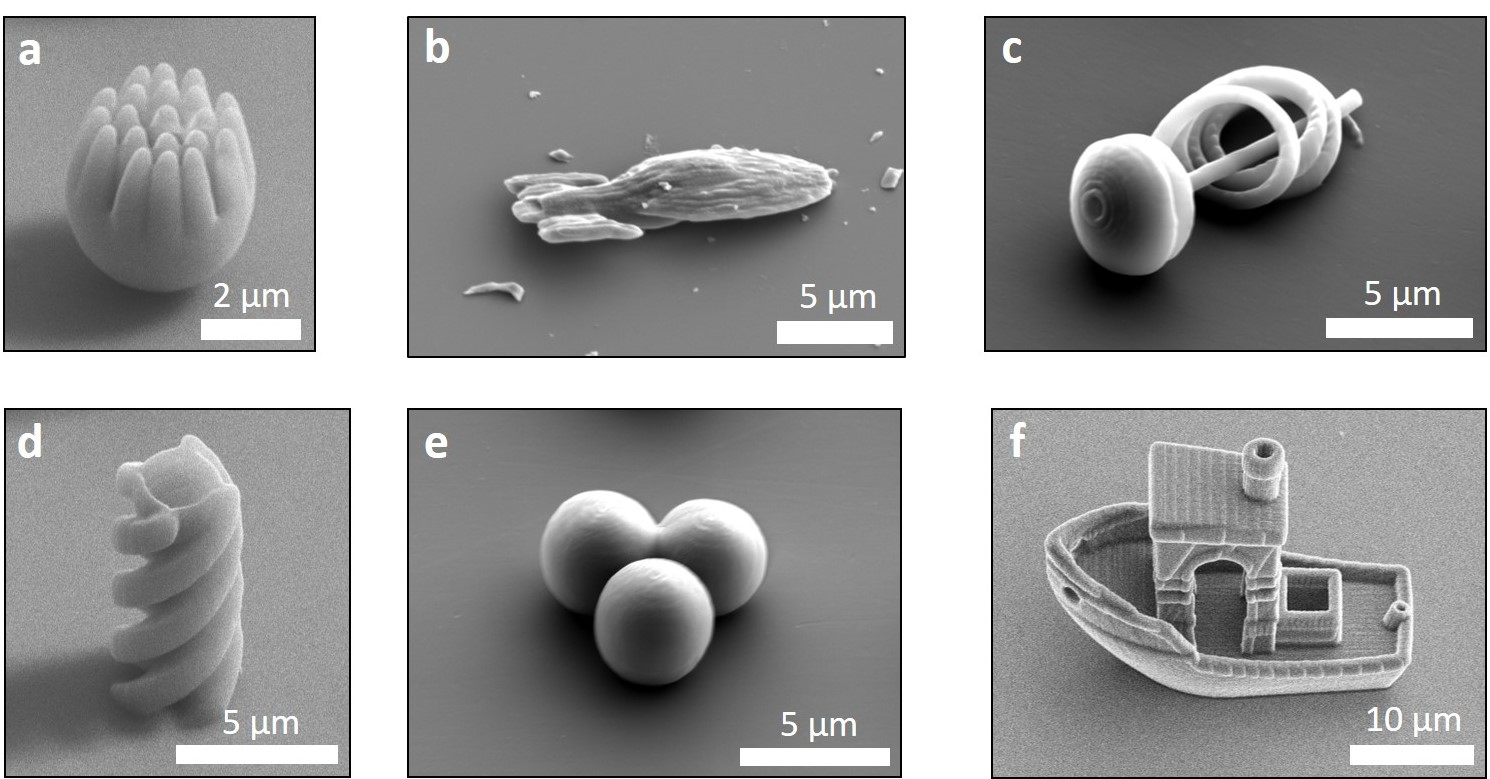Active particles
Colloidal swimmers, or active particles, constitute a new class of nonequilibrium model systems because they consume energy to move. They can furthermore be used as models to understand the behavior of biological microswimmers, and also hold great promise for applications such as targeted drug delivery.
In the Kraft lab we develop new types of active particles and quantitatively investigate their motion, interactions, and collective behavior.
Catalytically propelled colloidal spheres
A robust and widely employed way to create colloidal swimmers is to half-coat particles with platinum and disperse them in hydrogen peroxide. The catalytic decomposition of hydrogen peroxide on the platinum patch then propels the particles, but precisely how this propulsion mechanism works is still under debate. We discovered that nearby substrates, to which the particles have a strong affinity, affect the swimming speeds of the particles. In particular, we found a quantitative relationship between the slip of the substrate and the velocity of the particles. The swimmers furthermore adopt a constant height above the substrate, which we revealed by analyzing their active motion.
We studied the interactions of these catalytically propelled particles in a 1D enviornment. To do so, we leveraged their surface affinity and confined them to spherical posts. We found a rich variey of behaviors, from moving at stable distances to the dynamic formation, breaking and rearrangement of trains and chains.
Publications
- S. Ketzetzi, R. Doherty, J. de Graaf, D.J. Kraft, Slip length dependent propulsion speed of catalytic colloidal swimmers near walls, Physical Review Letters, , (2020)
- S. Ketzetzi, J. de Graaf, D.J. Kraft, Diffusion-based height analysis reveals robust microswimmer-wall separation, Physical Review Letters, 125(23), 238001 (2020)
- S. Ketzetzi, M. Rinaldin, P. Dröge, J. de Graaf, D.J. Kraft, Activity-induced interactions and cooperation of artificial microswimmers in one-dimensional environments, Nature Communications, 13 (1), 1772 (2022)
Anisotropic active particles

Self-propelling particles can be used as a model system for understanding the behavior of biological microswimmers. However, most synthetic microswimmers are spherical, whereas many biological microswimmers are more complex in shape. We use 3D microprinting and synthetic methods to create anisotropic active particles and study how a different particle symmetry affects their motion, interactions, and collective behavior. For example, our microscopic version of 3D Benchy boat swims in circles due to its approximately L-shape.
Cluster formation of microscopic swimmers is key to the formation of biofilms and colonies, efficient motion and nutrient uptake, but, in the absence of other interactions, requires high swimmer concentrations to occur. Using anisotropic microswimmers, we experimentally and numerically showed that cluster formation can be dramatically enhanced by an anisotropic swimmer shape. We analyzed a class of model microswimmers with a shape that can be continuously tuned from spherical to bent and straight rods. In all cases, clustering can be described by Michaelis-Menten kinetics governed by a single scaling parameter that depends on particle density and shape only. We rationalized these shape-dependent dynamics from the interplay between interlocking probability and cluster stability. The bent rod shape promotes assembly in an interlocking fashion even at vanishingly low particle densities and we identified the most efficient shape to be a semicircle.
Publications
- R.P. Doherty, T. Varkevisser, M. Teunisse, J. Hoecht, S. Ketzetzi, S. Ouhajji, D.J. Kraft, Catalytically propelled 3D printed colloidal microswimmers, Soft Matter, 16, 10463-10469 (2020)
- S. Riedel, L. Hoffmann, L. Giomi, D.J. Kraft, Designing highly efficient lock-and-key interactions in anisotropic active particles, Nature Communications, 15, 5692 (2024)
- S. Caipa Cure, D.J. Kraft, Fabrication and Characterization of Bimetallic Silica-Based and 3D-Printed Active Colloidal Cubes, Langmuir, 41, 18 , 11638–11647 (2025)